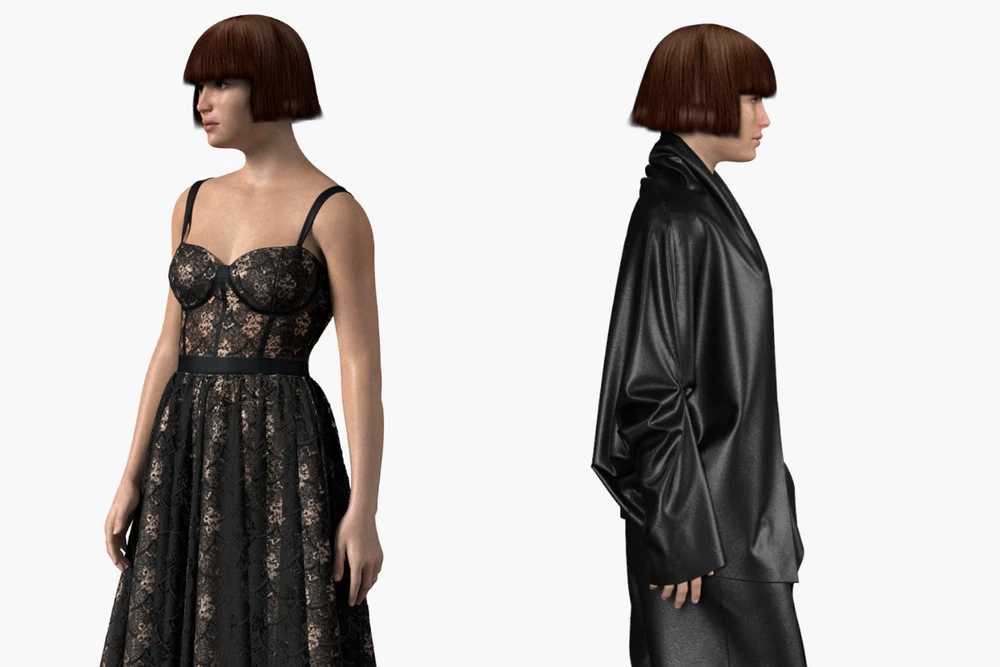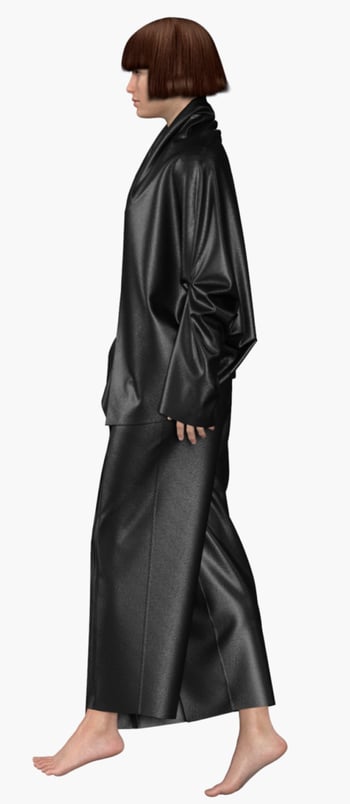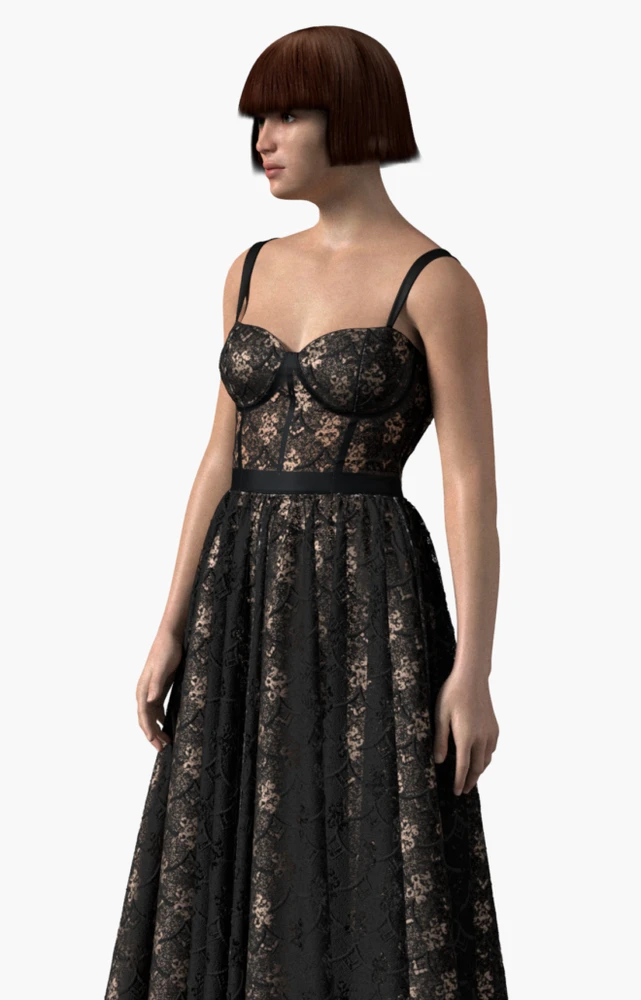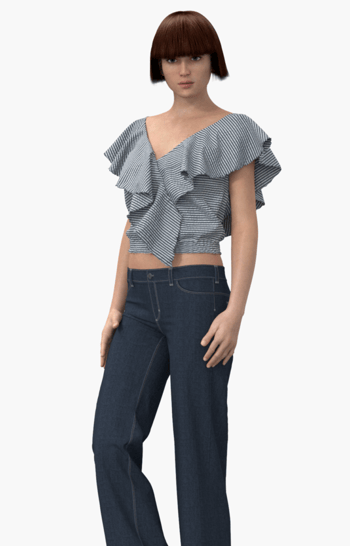What is Digital Product Creation in the Fashion Industry?
Explore how Digital Product Creation (DPC) transforms fashion with 3D design tools, reducing waste, cutting costs, and boosting creativity.


As 3D continues to disrupt the apparel industry, we love to learn about how different independent designers have embraced it. We recently chatted with Digital Fashion Design Consultant, and Co-Founder at NOFORM , Rahul Verma , to discover how 3D has impacted his career in the apparel industry.
From a young age, Rahul has been passionate about art and design and expressing his creativity in artistic forms such as drawing and painting. When it came to furthering his education, Rahul chose to continue down the creative path, studying Fashion Design at the National Institute of Fashion Technology in New Delhi from 2004-2008. After completing his Bachelor’s degree, Rahul worked as an Assistant Designer at Rohit Gandhi and Rahul Khanna, gaining a broad understanding of the fashion design and development cycle, from concept through to creation. After gaining industry experience for several years, Rahul earned a place at the London College of Fashion, pursuing a Master of Arts in Fashion Design and Technology for Womenswear, to explore the European fashion industry, and continue his professional journey.
It was at this point that he began to embrace the more technical aspects of apparel design, diving into different software including Adobe Illustrator and Photoshop, as well as working on tech pack creation. While interning at London-based fashion designers David Koma and Roksanda, Rahul developed more of an interest in the analytical side of apparel creation, gravitating towards pattern cutting which requires precision and technical skills to achieve the best results. He then began to work as a freelance technical designer throughout the rest of his time in London, building tech packs for local designers.
 In 2013, Rahul set out on the next step of his journey, taking on the role as a Professor of Fashion at the Savannah College of Art & Design, Atlanta, teaching textiles, pattern making, and CAD. During his time as a professor, Rahul sparked an interest in 3D fashion design after listening to Browzwear’s CEO, Sharon Lim introduce the concept of digital patternmaking as a guest speaker in a colleague’s class in 2013. “The concept of 3D was extremely eye-opening for me, as I didn’t yet know that it existed and the possibilities it presented were endless,” says Rahul. “It was as if everything I loved about fashion and all of my interests were available on one platform”. Rahul soon began to dive into the fashion-tech territory, realizing that this was what he ultimately wanted to pursue.
In 2013, Rahul set out on the next step of his journey, taking on the role as a Professor of Fashion at the Savannah College of Art & Design, Atlanta, teaching textiles, pattern making, and CAD. During his time as a professor, Rahul sparked an interest in 3D fashion design after listening to Browzwear’s CEO, Sharon Lim introduce the concept of digital patternmaking as a guest speaker in a colleague’s class in 2013. “The concept of 3D was extremely eye-opening for me, as I didn’t yet know that it existed and the possibilities it presented were endless,” says Rahul. “It was as if everything I loved about fashion and all of my interests were available on one platform”. Rahul soon began to dive into the fashion-tech territory, realizing that this was what he ultimately wanted to pursue.
Rahul became increasingly interested in the world of fashion-tech, constantly keeping up to date with the latest trends and advancements. In 2019, he decided to return to his home in India and take a break from teaching to further investigate the concept of 3D fashion, joining the Browzwear Indie Program to get started at full steam ahead. “Browzwear’s Indie Program alongside its e-learning platform Browzwear University has been a wonderful resource in making the shift to digital. By adopting 3D, fashion professionals can move to a far more efficient and sustainable way of working,” says Rahul. “With Browzwear’s VStitcher, I find it particularly useful when it comes to applying materials and texturing. The software’s visualization quality and integration with assets such as Substance by Adobe enable you to craft phenomenal effects without needing to be an expert. I can create embroidery, foil prints, and emboss effects in just a few quick clicks. It’s so important to have a program that allows you to create such variety,” says Rahul. “The fabric simulation in VStitcher is very accurate. It is designed to create exact replicas without any discrepancies.”
 As Rahul progressed on the Indie Program and became a member of the Browzwear Professional Guild, he began exploring ideas on how to establish a business and take his skills to a professional level. After working as a freelance consultant collaborating on projects with global companies including Target, he began to gain an increasing amount of inquiries regarding 3D in the first quarter of 2020. “The industry was already changing before the pandemic hit, yet it pushed more people to think about it and bring it higher up on their agenda. People were able to see the flexibility and possibilities that 3D brought,” says Rahul. As the Co-Founder of NOFORM, a digital fashion design studio, Rahul utilizes his knowledge and experience in digital technology and sustainable design methods to understand his clients’ needs and enable them to solve their challenges. In addition, he conducts workshops as well as training for new users looking to skill up and advance on their digital journeys. By looking beyond the fashion industry’s traditional ways, Rahul and the team and NOFORM aim to create a sustainable and efficient ecosystem for fashion. “3D is not just a trend, It is shaking the fashion industry from the ground up,” says Rahul. “Now is one of the most exciting times for the fashion industry, 3D is becoming the norm, real changes are taking place, and I am proud to be a part of it.”
As Rahul progressed on the Indie Program and became a member of the Browzwear Professional Guild, he began exploring ideas on how to establish a business and take his skills to a professional level. After working as a freelance consultant collaborating on projects with global companies including Target, he began to gain an increasing amount of inquiries regarding 3D in the first quarter of 2020. “The industry was already changing before the pandemic hit, yet it pushed more people to think about it and bring it higher up on their agenda. People were able to see the flexibility and possibilities that 3D brought,” says Rahul. As the Co-Founder of NOFORM, a digital fashion design studio, Rahul utilizes his knowledge and experience in digital technology and sustainable design methods to understand his clients’ needs and enable them to solve their challenges. In addition, he conducts workshops as well as training for new users looking to skill up and advance on their digital journeys. By looking beyond the fashion industry’s traditional ways, Rahul and the team and NOFORM aim to create a sustainable and efficient ecosystem for fashion. “3D is not just a trend, It is shaking the fashion industry from the ground up,” says Rahul. “Now is one of the most exciting times for the fashion industry, 3D is becoming the norm, real changes are taking place, and I am proud to be a part of it.”
Browzwear’s Indie ProgramIf you are an independent designer looking to enter the world of 3D, apply for Browzwear’s Indie Program
“The industry was already changing before the pandemic hit, yet it pushed more people to think about it and bring it higher up on their agenda. People were able to see the flexibility and possibilities that 3D brought,”

Explore how Digital Product Creation (DPC) transforms fashion with 3D design tools, reducing waste, cutting costs, and boosting creativity.
Explore how fashion students use 3D tools and real-world workflows to bring digital designs to life in the Browzwear & HCMUTE competition.
Discover how 3D rendering revolutionizes fashion design with realistic prototypes, reduced waste, and innovative tools like Browzwear's VStitcher.